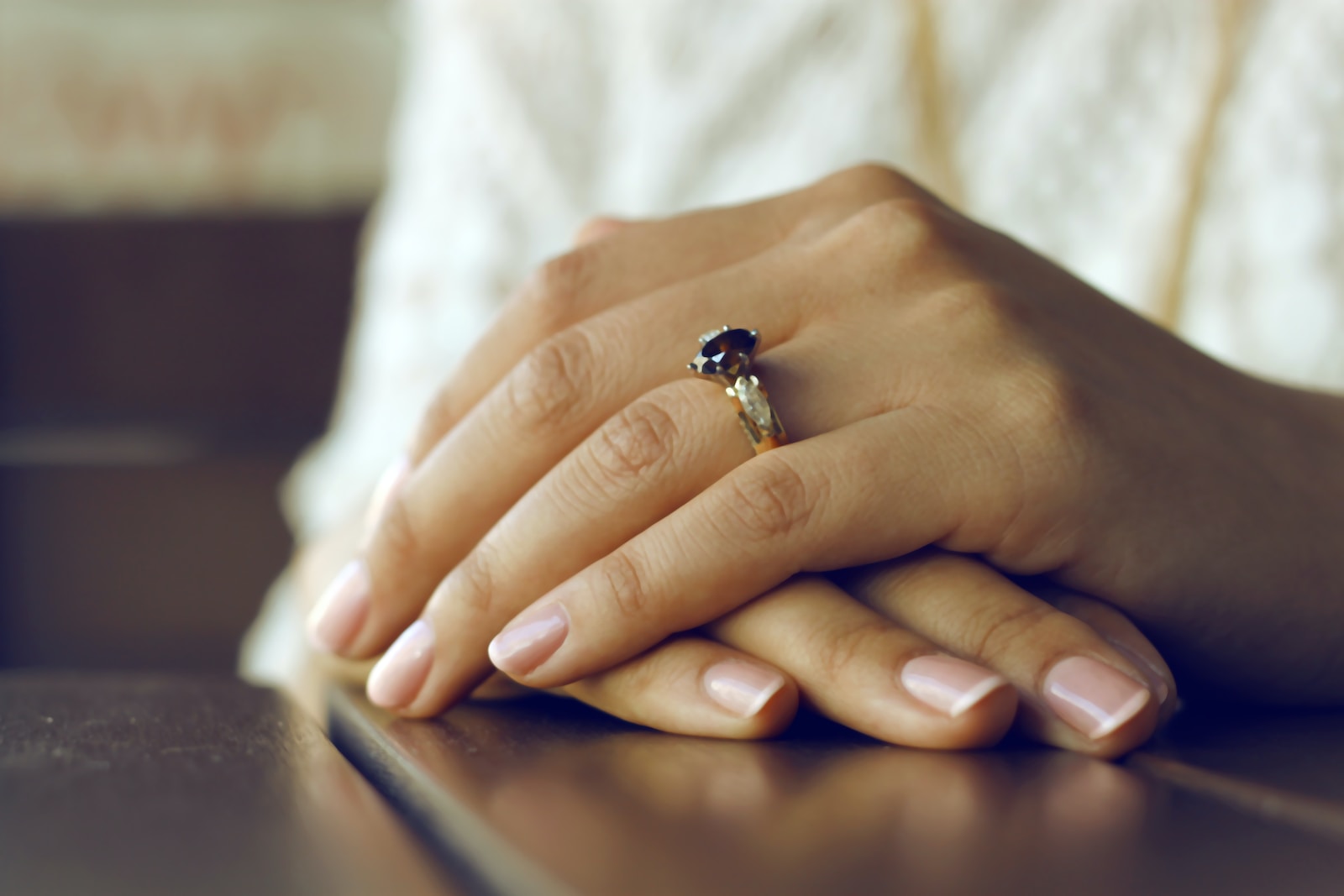A full set of nails refers to a type of manicure where artificial nails are applied to all of the natural nails, offering a uniform and beautified appearance. This beauty treatment is popular in salons and is sought after for its ability to enhance the length and shape of natural nails. Typically, materials such as acrylic, gel, silk, or fiberglass are used to create these extensions. Once applied, they are usually accompanied by a base coat, a choice of color or nail art, and a finishing topcoat for durability and shine.
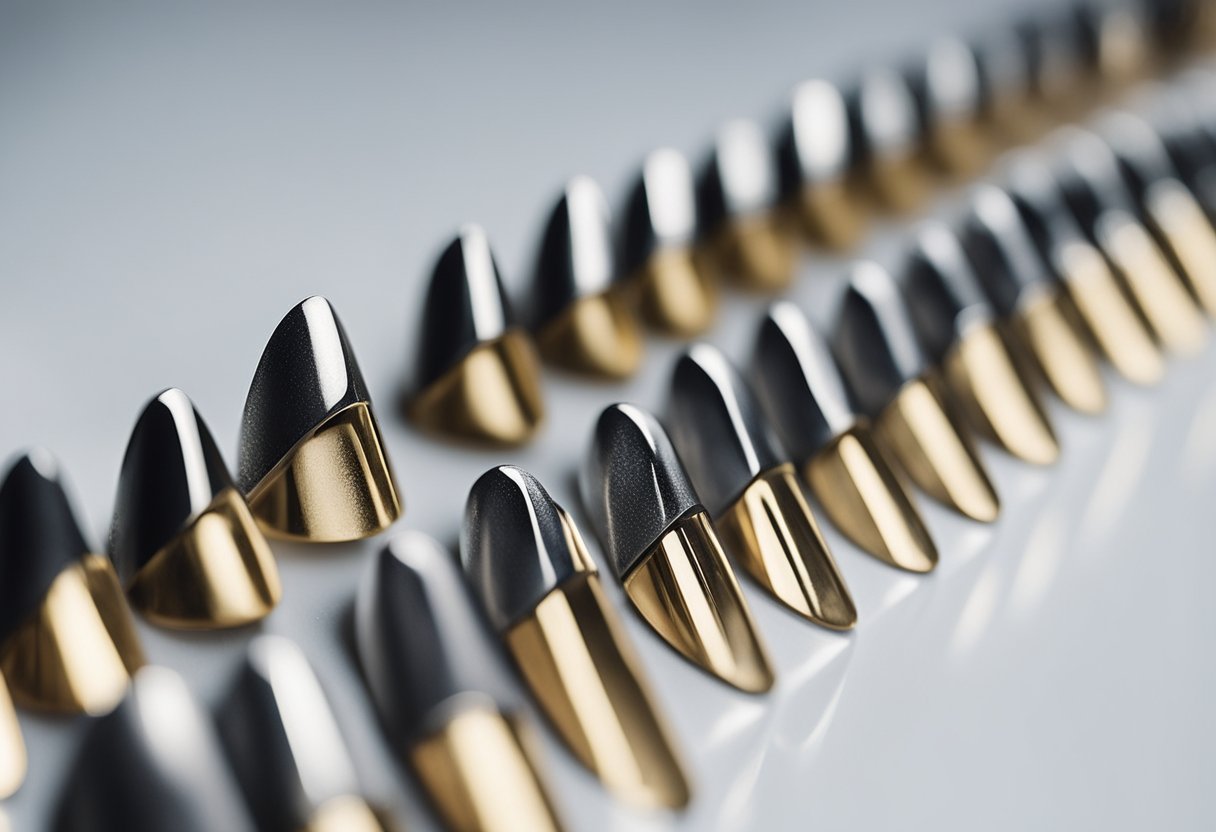
Understanding the process involved in getting a full set of nails equips individuals with the knowledge to make informed decisions about their manicure options. Whether the goal is to have a polished look for a special occasion or to maintain a certain aesthetic on a regular basis, having artificial nails applied can be a significant part of one’s beauty regimen. The application, maintenance, and removal of such nails require a level of commitment and care, often necessitating regular visits to a professional nail technician.
The longevity and quality of a full set of nails can vary based on the materials used and the individual’s nail care practices. It’s important for the wearer to follow the nail technician’s recommendations on upkeep to prevent damage to the natural nails. Additionally, when considering a full set of nails, one may want to learn about the health implications of artificial nails, including how to protect the natural nail bed and cuticles throughout the process.
Chapter Overview
Types of Full Nail Sets
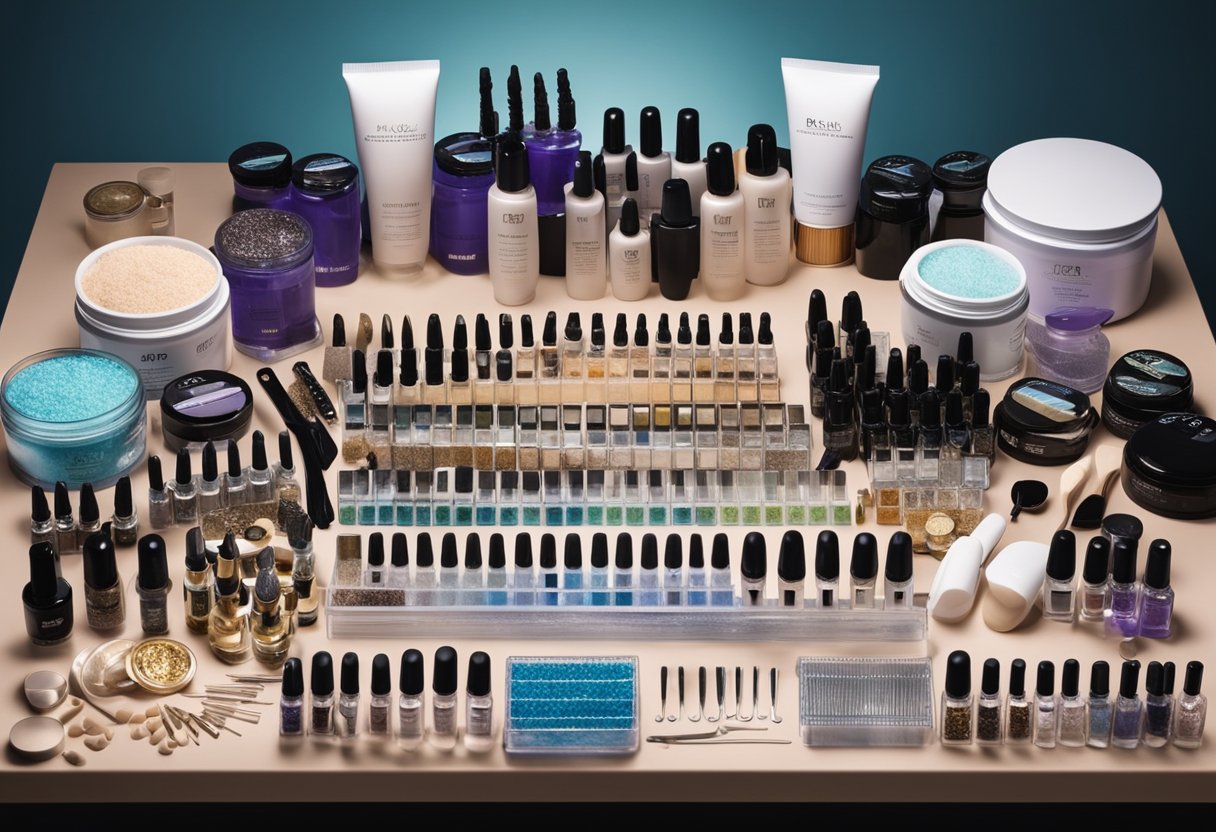
Full nail sets come in various compositions and techniques, each with unique attributes and application processes. They offer diverse longevity and aesthetic options to suit individual preferences and lifestyles.
Acrylic Nails
Acrylic nails involve a combination of powder and liquid monomer that hardens when exposed to air, creating a durable layer over the natural nail or as a nail extension. The acrylic overlay is sculpted and shaped to the desired length and form. Popular for their strength, acrylic nails are ideal for those looking for a long-lasting manicure option with plenty of room for creative designs.
Gel Nails
A gel manicure consists of nail extensions or overlays made using gel products that cure under UV or LED light. Gel nails provide a glossy finish and are more flexible than acrylic. They are less likely to chip and offer a more natural look. There are various types of gel products, including hard gels for extensions and softer gel polishes for overlays.
Dip Powder Nails
Dip powder nails represent a system where nails are dipped into colored powder, then sealed with a clear protective resin. Unlike gels and acrylics, dip powders do not require curing under a lamp and can provide a similar level of durability. They are known for their ease of application and a wide range of color options.
The Nail Enhancement Process
The nail enhancement process is a detailed procedure that transforms the natural nail into a canvas for artistic expression. It involves skillful preparation, precise application, and careful finishing by the nail technician, ensuring both durability and aesthetics.
Preparation of the Natural Nail
The technician begins with thorough cleansing to remove any oils or debris on the nail bed, ensuring optimal adhesion for the enhancements. They then proceed to trim and buff the surface gently, creating an even texture. At this stage, meticulous shaping of the natural nail is key to achieving the desired length and shape for the enhancement.
Application and Shaping
Using a brush, the nail technician precisely applies the chosen enhancement product, whether it be gel, acrylic, or another material. A nail form might be positioned under the nail tip to aid in extending the nail length. Shaping is executed with a nail file, refining the sides and tip to the client’s preference. During this phase, the color and any nail art are added, showcasing the technician’s skill and artistic flair.
Curing and Sealing
Once the ideal shape and length are attained, the nail enhancements are cured under a UV or LED light, depending on the product used. This step is crucial as it hardens the product, giving it strength and resilience. The final step involves sealing the enhancements with a topcoat to protect against chips and scratches, enhancing the overall shine and ensuring long-lasting wear.
Aftercare and Maintenance
After investing in a full set of nails, it’s essential for individuals to engage in regular aftercare and maintenance. This involves attention to upkeep, protecting the nails from damage, and understanding the process of removal and fill-ins to maintain nail health and appearance.
Routine Upkeep
For routine upkeep, individuals should regularly apply cuticle oil to nourish the nails and enhance their strength. They might also want to consider wearing gloves when doing household chores to protect the nail enhancement from chemicals and water. Maintaining the nails at home can involve gentle filing to keep the shape and occasional touch-ups with the same type of product that was used in the original application.
Damage Prevention
Preventing damage to nail enhancements is as important as the initial application. Users should avoid using their nails as tools, which can lead to chipping or lifting. Encouraging nail care through the use of specific products that reinforce the nail’s strength can be beneficial. They should avoid intense hydration after leaving the salon to ensure polish and adhesives set correctly and last longer.
Removal and Fill-Ins
The proper removal of nail enhancements, usually involving an acetone soak to prevent damage to the natural nail, must be done carefully. Fill-ins should be done regularly, typically every 2 to 3 weeks, depending on nail growth and the type of nail enhancement used. It is crucial to check for any lifting of the nails and have them filled or removed as necessary. When removing nail enhancements at home, following prescribed methods and using the right products assures the health of the natural nails remains intact.
Health and Safety Considerations
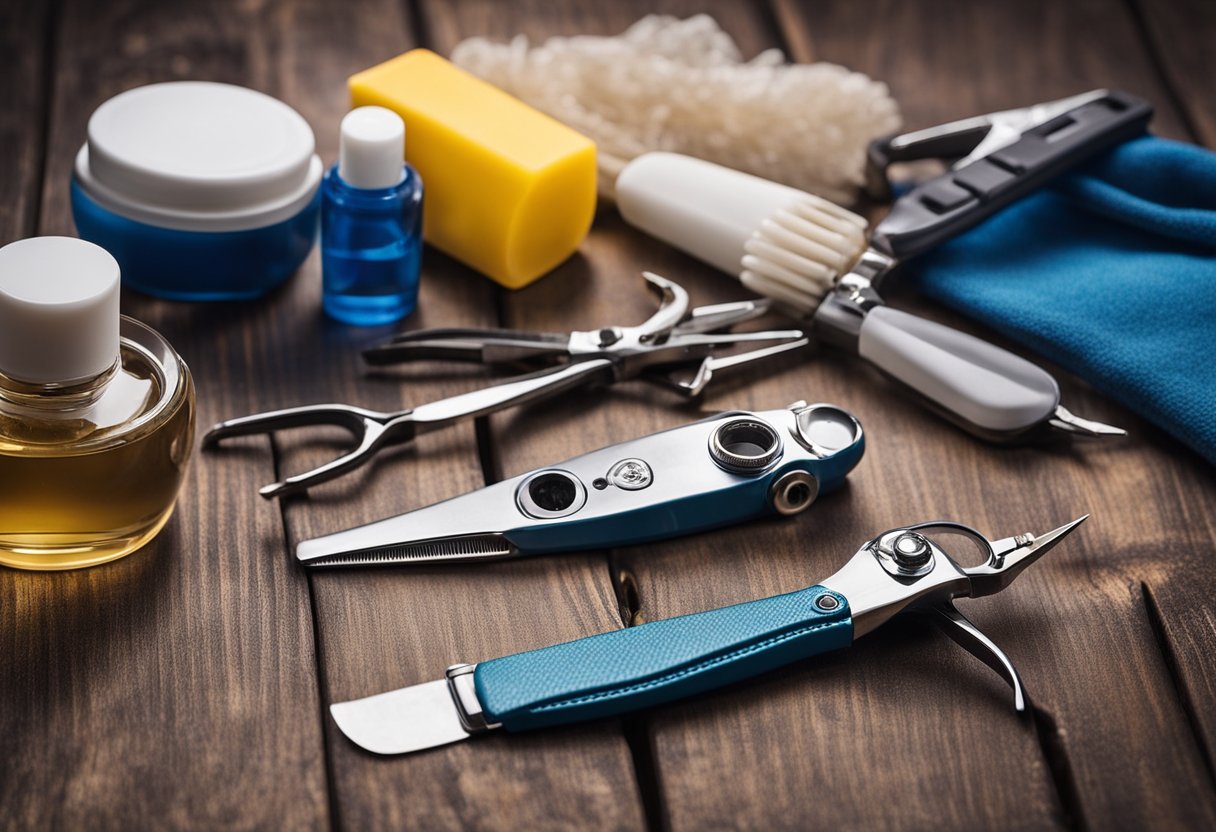
When getting a full set of nails, it is crucial to prioritize health and safety to prevent potential damage and infections. Both clients and technicians must be aware of proper sanitation practices and the management of sensitivities to maintain nail health.
Avoiding Infections
In the context of nail care, sanitation is key to avoiding infections. Tools should be sterilized between clients to prevent the spread of bacteria, and salons must adhere to strict cleanliness standards. Clients should look for salons that use autoclaves or other proven sterilization methods. It’s also advised to avoid shaving legs before a pedicure, as nicks can make skin more susceptible to infection.
Managing Sensitivities
A full set of nails often involves exposure to chemicals and monomers that can cause sensitivities for those with sensitive skin. Clients should inform their nail technicians about any known sensitivities to avoid reactions. It’s important to ensure that the nail salon has proper ventilation to minimize odour exposure, which can also cause discomfort or allergic reactions. Salons can provide or suggest the use of hypoallergenic products for those at risk.
Style Choices and Salon Services
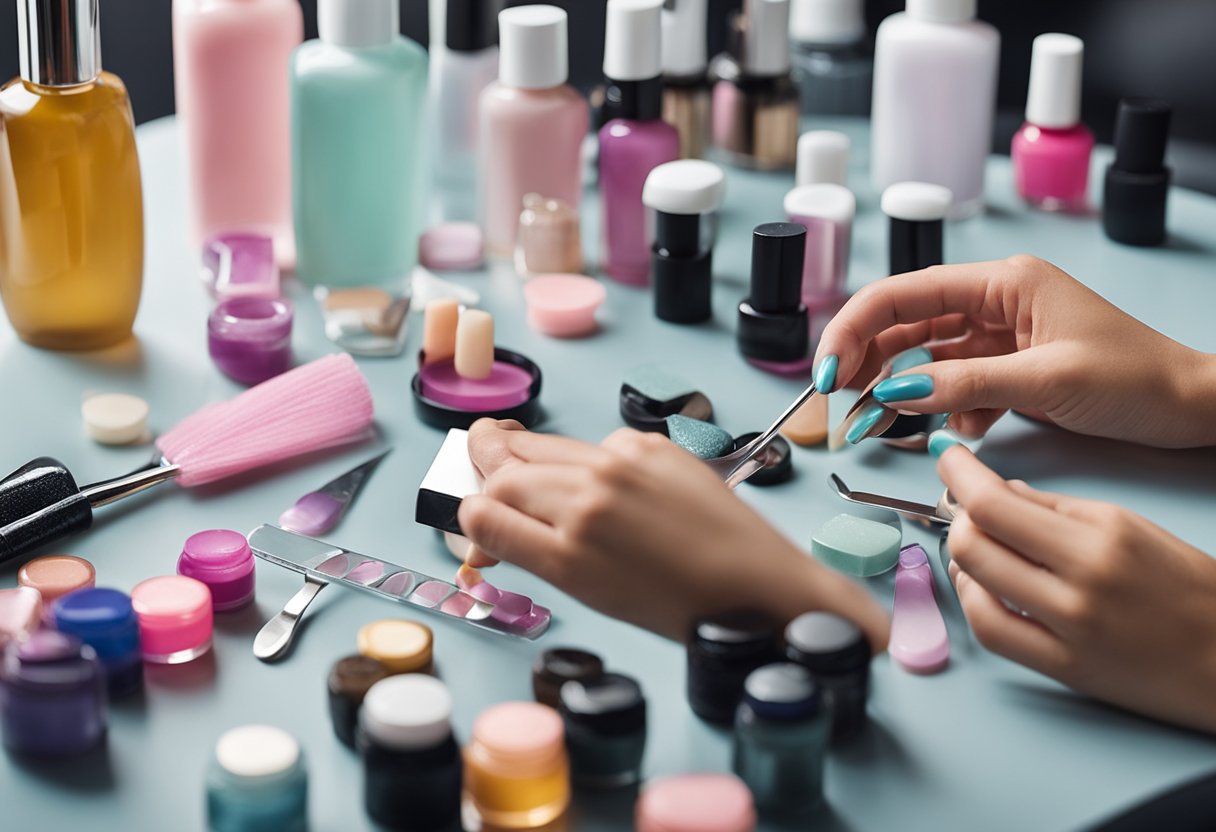
In considering a full set of nails, the decisions around nail shape and design are pivotal, and understanding the associated costs with salon offerings is essential for clients to make informed choices.
Choosing the Right Shape and Design
When they visit a beauty salon, clients have a plethora of options ranging from the classic round to a daring stiletto shape. For nail design, the choices can be as simple as a single color of polish or as complex as intricate nail art, which can also be influenced by popular trends on platforms like Instagram. Salons offer an array of products, such as regular nail polish and gel polish, to achieve the desired aesthetic.
- Shapes: Round, Square, Oval, Almond, Coffin, Stiletto
- Designs: Solid colors, French manicure, Ombré, Glitter, Rhinestone accents
Understanding Costs and Salon Offerings
Pricing in salons is typically tiered based on the nail services requested. A basic manicure with regular polish will cost less than one with gel polish due to the longevity and durability of the latter. Additional services such as nail extensions or custom nail art will add to the overall cost. It is advisable for clients to inquire about all available offerings and their corresponding prices ahead of getting their nails done to avoid any surprises.
- Base Services: Trimming, shaping, filing, buffing
- Additional Services: Cuticle care, extensions, nail art, massages
- Polish Types: Regular polish, Gel polish
Salons may also have packages or memberships that can provide better value for frequent clients.

